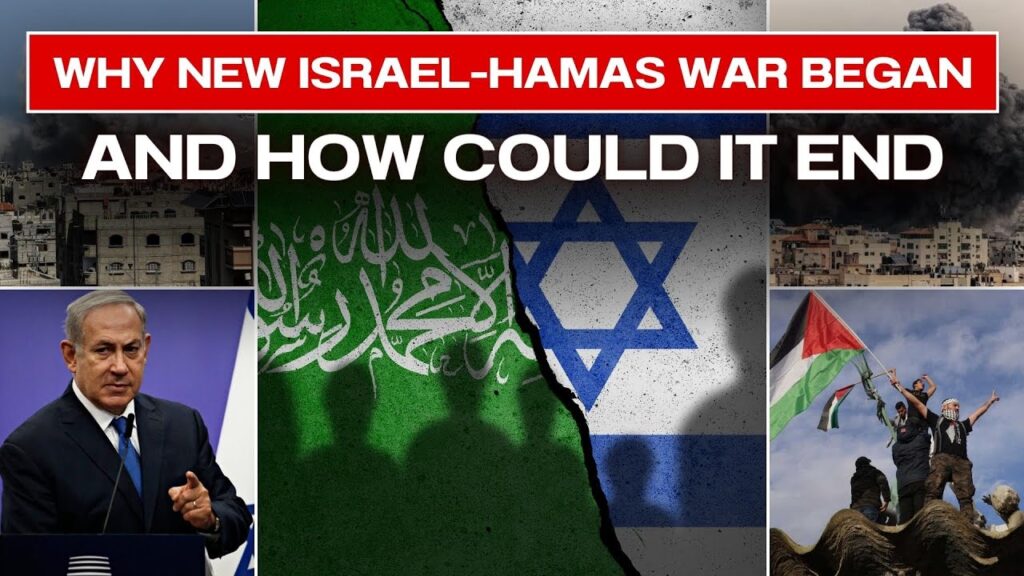The war raging for the past month in a tiny strip of land on the eastern Mediterranean has fully eclipsed the much larger drama of the past two years: Russia’s preparations and invasion of Eastern Europe’s largest piece of real estate. Today’s human suffering is more concentrated and more brutal.
Destructive, physical war, with its images of spectacular explosions, shattered buildings, bleeding limbs and corpses carried away on stretchers is one thing. But there appears to be an even bigger war going on. Last week, a New York Times article with the title, “In a Worldwide War of Words, Russia, China and Iran Back Hamas” quoted James P. Rubin, the head of the State Department’s Global Engagement Center: “We’re in an undeclared information war with authoritarian countries.”
Today’s Weekly Devil’s Dictionary definition:
Undeclared information war:
- Presumably the opposite of a declared information war, even though no procedure for declaring such a war exists.
- The practice, now massively adopted by corporate media in liberal democratic nations, reflecting the fact that corporations, in contrast to governments, lack accountability in the eyes of the public and never feel it necessary to declare their intentions.
Contextual note
NYT itself has long been an active participant in undeclared information wars. It spectacularly displayed its talents during Donald Trump’s term in the White House through its commitment to promoting the many fantasies summed up with the moniker, Russiagate. It turned out to be the most significant information war since the one led by notorious Senator Joseph McCarthy seven decades ago.
In their article, the authors, Steven Lee Myers and Sheera Frenkel, put on full display the Gray Lady’s techniques for managing an undeclared information war. It begins with this carefully crafted piece of disinformation: “Iran, Russia and, to a lesser degree, China have used state media and the world’s major social networking platforms to support Hamas and undercut Israel, while denigrating Israel’s principal ally, the United States.” The operative idea here is “support Hamas.”
In ordinary English, this means to actively promote the interest of Hamas and to condone its actions. But the authors provide zero evidence that the governments of any of the cited nations have declared their backing for Hamas. What they have done is unambiguously express their sympathy with the plight of the Palestinian people. The journalists equate sympathy for the massive suffering inflicted on Palestinian civilians with endorsement of a single barbaric attack by Hamas, an event prepared in such secrecy that it surprised the otherwise hypervigilant and technologically well-equipped Israelis.
This is just one example of how NYT has become adept at stating facts in a way that readers are likely to misconstrue. Another slightly more subtle example follows. “In a single day after the conflict began,” the article informs us, “roughly one in four accounts on Facebook, Instagram, TikTok and X posting about the conflict appeared to be fake, Cyabra found.”
There is no reason to doubt the veracity of this claim. But when it singles out the category of “posting about the conflict,” the authors fail to note that the impressive statistic most likely includes disinformation disseminated from both sides. Because the article is about nations that “support Hamas,” the authors naturally expect us to assume that the fake accounts and disinformation came from the Palestinian side.
To buttress their point, the authors continue with another assertion. “Researchers identified six coordinated campaigns on a scale so large, they said, that it suggested the involvement of nations or large nonstate actors.”
The structure of this sentence gives away its tactic. The fact that “they said” something that “suggested” something else tells us that we are already at two removes from factual reporting. We have no reason to doubt the truth of the claim that the researchers “said” this. It may also be true that one interpretation of what they said “suggests” complicity by a foreign government. But when there are no facts to back it up, the same phenomenon may “suggest” many other interpretations.
Later in the article, the assertion that “Israel, which has its own sophisticated information operations, has found itself unexpectedly on the defensive” comes as a kind of comic relief. The authors appear to be admitting that Israel itself is skilled in the art of disinformation. This undermines the impression they have tried to create from the headline on that the “good guys” are committed to telling the truth and the “bad guys” are busy spreading disinformation.
A reader with even a limited capacity for critical thinking will find other examples of comic deflation, what the Roman poet, Horace, once called a mountain giving birth to a mouse. We learn, for example, that the “State Department’s Global Engagement Center, which combats state propaganda and disinformation, has in recent weeks detailed extensive campaigns by Russia and China to shape the global information environment to their advantage.” Do they expect their readers to be shocked that a particular nation might seek to “shape the global information environment to [its] advantage?” Surely no one at the State Department itself would think of doing anything so profoundly immoral.
To add to the comic effect, the following paragraph ends with this sentence: “Since the war began, China has portrayed itself as a neutral peacemaker, while its officials have depicted the United States as a craven warmonger that suffered a ‘strategic failure in the Middle East. Any objective student of recent history cannot fail to be aware that China has made the news as a peacemaker — most spectacularly when it brokered an end to the dangerous tension between Saudi Arabia and Iran. The same student of history will recognize that for many decades the US has repeatedly engaged in violent and literally undeclared military operations as well as long-term occupations of other nations across the globe.
Does that prove China is “neutral?” Certainly not, but Beijing has clearly done more peacemaking than warmongering. As for the US being a “craven warmonger,” beyond its history of its forever wars — whether direct or proxy — its chaotic retreat from Afghanistan in 2021 left an impression in many people’s minds that the US sometimes does appear “craven.”
Historical note
The “Worldwide War of Words” NYT attributes to “Russia, China and Iran” has ancient roots. It is a feature of the modern world dating back at least to Gutenberg. The invention of the printing press in Europe fueled the Protestant revolt against the Catholic Church and 150 years of religious wars in Europe. This launched a bitter war of printed words even more extreme in its rhetoric and fantasized disinformation than anything we can read today. The worst conspiracy theories on social media appear tame in comparison.
Deep in the NYT article, the authors reveal the gist of their carefully distorted accusation. “The war has heightened concerns in Washington and other Western capitals that an alliance of authoritarian governments has succeeded in fomenting illiberal, antidemocratic sentiment, especially in Africa, South America and other parts of the world where accusations of American or Western colonialism or dominance find fertile soil.”
This claim, stated with a tone of high seriousness, is borderline paranoid fantasy. Earlier the authors suggested that randomly convergent efforts to “support Hamas” and “undermine Israel” could be interpreted as a coordinated plan. That was mere innuendo introduced by the notion of a “suggested” interpretation. Now they want us to believe in a kind of new “axis of evil” that opposes liberal democracy.
No one can ignore the sequence of events that followed the last public campaign to warn the West about an axis of evil” bent on the destruction of our enlightened way of life. The team led by George Bush, Dick Cheney and Donald Rumsfeld provided only too visible proof over their eight years at the helm that the US was capable of falling into the role of a “craven warmonger.” That particular campaign ultimately died in Afghanistan in 2021. It is now living again, at least in the pages of The New York Times.
*[In the age of Oscar Wilde and Mark Twain, another American wit, the journalist Ambrose Bierce produced a series of satirical definitions of commonly used terms, throwing light on their hidden meanings in real discourse. Bierce eventually collected and published them as a book, The Devil’s Dictionary, in 1911. We have shamelessly appropriated his title in the interest of continuing his wholesome pedagogical effort to enlighten generations of readers of the news. Read more of Fair Observer Devil’s Dictionary.]
The views expressed in this article are the author’s own and do not necessarily reflect Fair Observer’s editorial policy.
Support Fair Observer
We rely on your support for our independence, diversity and quality.
For more than 10 years, Fair Observer has been free, fair and independent. No billionaire owns us, no advertisers control us. We are a reader-supported nonprofit. Unlike many other publications, we keep our content free for readers regardless of where they live or whether they can afford to pay. We have no paywalls and no ads.
In the post-truth era of fake news, echo chambers and filter bubbles, we publish a plurality of perspectives from around the world. Anyone can publish with us, but everyone goes through a rigorous editorial process. So, you get fact-checked, well-reasoned content instead of noise.
We publish 2,500+ voices from 90+ countries. We also conduct education and training programs
on subjects ranging from digital media and journalism to writing and critical thinking. This
doesn’t come cheap. Servers, editors, trainers and web developers cost
money.
Please consider supporting us on a regular basis as a recurring donor or a
sustaining member.
Will you support FO’s journalism?
We rely on your support for our independence, diversity and quality.










Comment